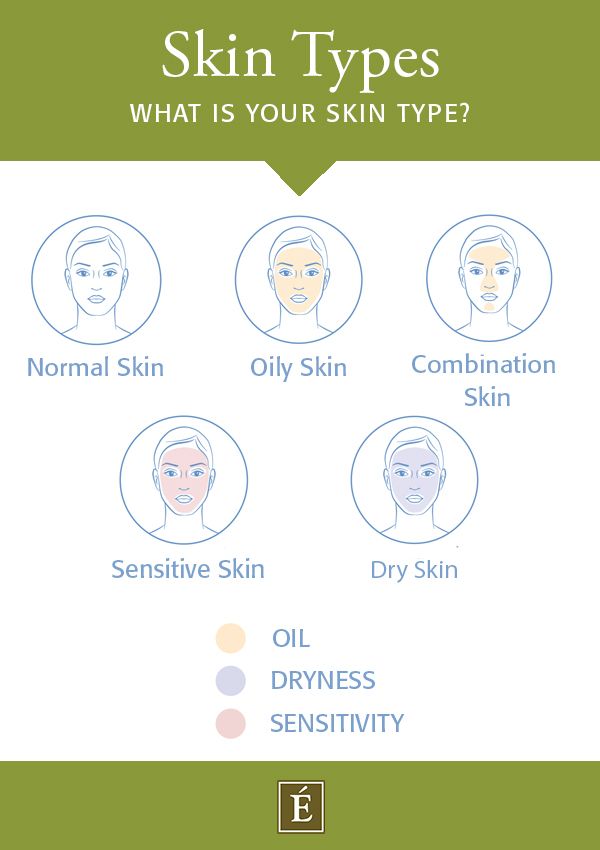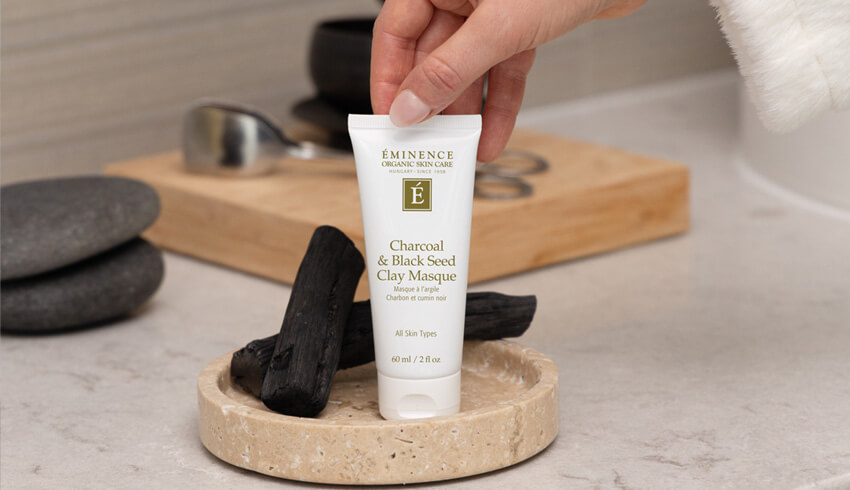
No one knows your skin better than you do, but are you truly BFFs or just passing acquaintances? Whether you find your skin as predictable as your best friend or unknowable as a perfect stranger, figuring out what you’re dealing with is the first step to understanding your complexion. Read on to find out more about your skin type, and how to identify it with an easy test.
Your skin type is something that you’re born with and purely determined by your genes. Even when you alter factors like diet or environment, your skin type always stays the same. This important categorization for your skin (whether it’s a dry, oily or another skin type) never changes throughout your life.

Knowing your skin type is essential for healthy, beautiful skin and helps you decide on the right skin care routines and products. Although it's best to visit an Eminence Organics spa so an esthetician can professionally diagnose your skin, we also have this simple three-step test that you can do at home to reveal your skin type now. After all, identifying your skin type is the most essential stage to deciphering your skin and finding out what it needs to look its best.

Three-Step Skin Type Test
Step One: Cleanse & Wait
Wash your face with your favorite cleanser, and refrain from applying any product for at least an hour. Take notice of how your skin is feeling. Is it tight? Normal or comfortable? Or is it comfortable in the T-zone only and tight on the cheeks?
Step Two: Blot Skin
Take a clean piece of tissue or blotting paper and gently dab on T-zone areas such as the nose, forehead and cheeks.
Step Three: Diagnose The Results
How does your skin feel?
A. Comfortable all over with no residue on tissue
B. Comfortable with residue on tissue
C. Comfortable in the T-zone, tight on your cheeks and residue on the tissue
D. Tight with no residue on tissue
E. Tight, itchy and inflamed. Tissue may or may not have residue
Read below and find out how your answer indicates your specific skin type.
A - Normal Skin
Congratulations! You’re lucky enough to have a normal skin type which means that your skin is healthy and perfectly balanced. Your complexion looks evenly hydrated with balanced oil levels and uniform texture.
Find out more about normal skin and which products you need for optimal care.
B - Oily Skin
You have oily skin and your sebaceous glands produce too much sebum. Because of these overactive oil glands, your pores appear larger, your skin can look shiny and you’re more prone to breakouts.
Find out more about oily skin and the best routine for keeping your oil in check.
C - Combination Skin
A combination skin type can be the trickiest one to treat. With oil glands that are active in the forehead, nose and chin areas of the T-zone and less active everywhere else, combination skin is a complexion with a split personality.
Find out more about combination skin and the ideal products for this complicated skin type.
D - Dry Skin
If you have dry skin, your complexion doesn’t produce enough lipids to moisturize and protect your skin. It will often feel tight, uncomfortable and even flaky in areas of the skin. Although dry skin has small pores, fine lines and wrinkles are also more obvious.
Find out more about dry skin, and watch the video below for a full skin care routine that targets dull, dry skin.
E - Sensitive Skin
Sensitive skin can produce a range of different symptoms but most commonly, it appears red and irritated. Reacting to factors like lifestyle choices, chemical ingredients or environmental stressors, sensitive skin responds negatively to irritations.
Find out more about sensitive skin and which products you need for this skin type.
Knowing your skin type is important because types and conditions are often mistaken for each other. Whether your issue is actually due to your skin type or, in fact, a disorder or a reaction due to product misuse, getting to the bottom of your skin problem is essential. Here are three common areas of confusion:
Dry Skin Vs. Dehydrated Skin
Dehydrated skin, a condition, is often mistaken for dry skin, a skin type. However, dehydration refers to a lack of water in the skin where as dry skin is actually a lack of lipids. Of course, the skin type and condition can be related: The lack of a lipid barrier in dry skin often allows water to leave the skin, leaving it dehydrated.
In general, though, dehydration and dryness are two separate categories. Dehydrated skin is a temporary condition that can be fixed by topical skin care treatments and lifestyle changes that helps the skin stay hydrated, including a better diet and a more humid environment. Dry skin, on the other hand, is permanent although it can be improved with skin care products and treatments.
Combination Skin Vs. Seborrheic Dermatitis Or Eczema
A very common skin disorder, seborrheic dermatitis, or eczema, displays symptoms that look like a combination of dry and oily skin. Alongside the greasiness caused by overactive oil glands and a type of fungus which encourages the skin to produce even more oil, the skin also manages to look flaky and red at the same time which can be mistaken for dryness. According to Elle, this oily, scaly mess can look like a combination skin type but is actually just another skin problem that requires a very different treatment.

Sensitive Skin Vs. Wrong Products
If your skin is red and raw, it’s sensitive, right? Well, sometimes your skin acts irritated not because it’s a sensitive skin type but because you’re using the wrong products or treatments. The two most common situations are overzealous exfoliation and overuse of acne products. If you’re a fan of retinols, microdermabrasions or peels, excessive use or the wrong products can leave your skin in a state that mimics sensitive skin. Likewise, if you’re battling acne, products that are too powerful or used too often can fool you into believing that you have a sensitive skin type.
Now that you’ve taken the test and discovered your skin type, explore our product recommender for Eminence Organics products that work best for your skin type. Or visit an Eminence Organics Spa Partner near you for an assessment and customized recommendations from a trained esthetician. Was your true skin type a surprise? Let us know in the comments or connect with us on social media.


